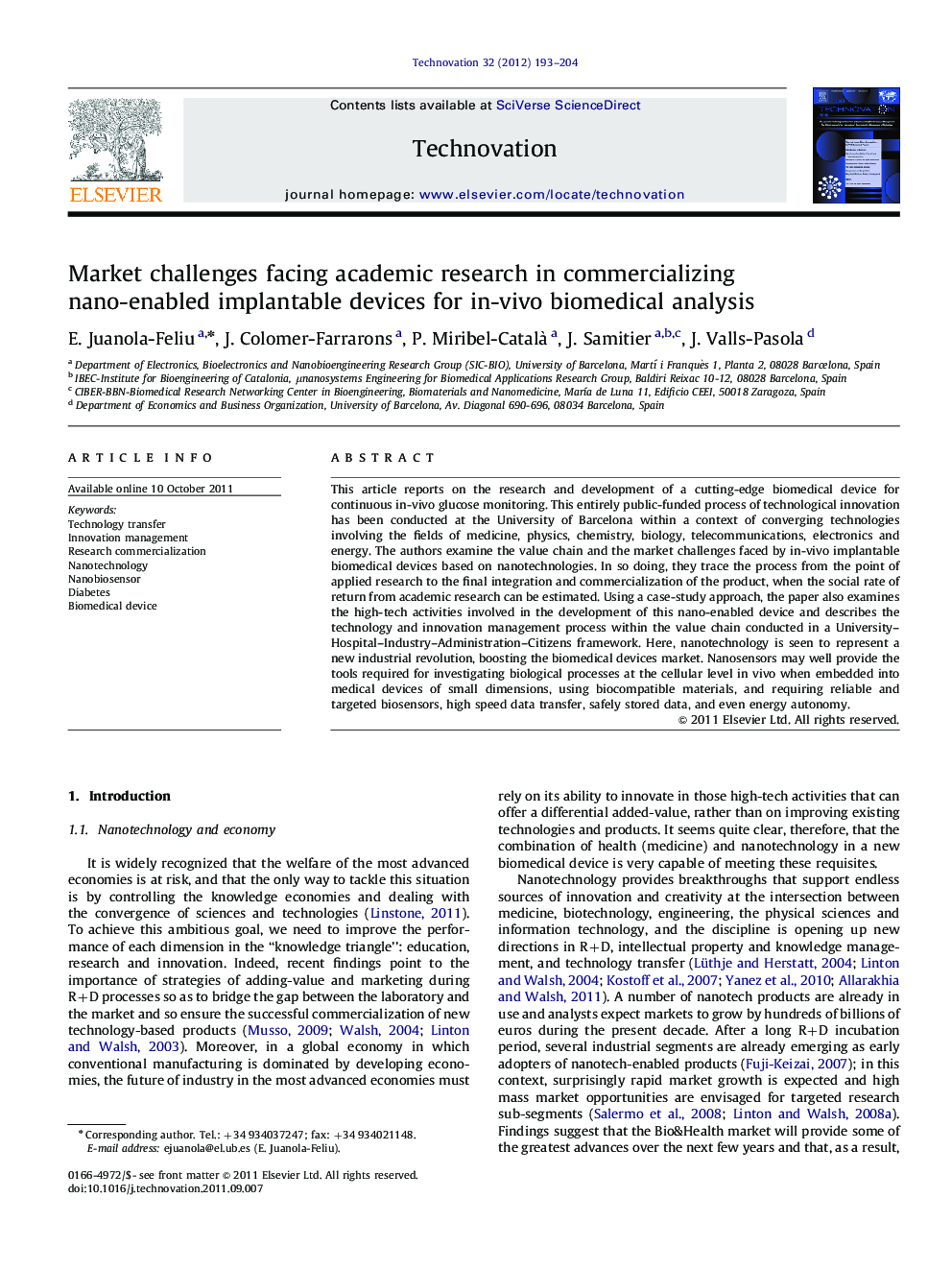| Article ID | Journal | Published Year | Pages | File Type |
|---|---|---|---|---|
| 1022039 | Technovation | 2012 | 12 Pages |
This article reports on the research and development of a cutting-edge biomedical device for continuous in-vivo glucose monitoring. This entirely public-funded process of technological innovation has been conducted at the University of Barcelona within a context of converging technologies involving the fields of medicine, physics, chemistry, biology, telecommunications, electronics and energy. The authors examine the value chain and the market challenges faced by in-vivo implantable biomedical devices based on nanotechnologies. In so doing, they trace the process from the point of applied research to the final integration and commercialization of the product, when the social rate of return from academic research can be estimated. Using a case-study approach, the paper also examines the high-tech activities involved in the development of this nano-enabled device and describes the technology and innovation management process within the value chain conducted in a University–Hospital–Industry–Administration–Citizens framework. Here, nanotechnology is seen to represent a new industrial revolution, boosting the biomedical devices market. Nanosensors may well provide the tools required for investigating biological processes at the cellular level in vivo when embedded into medical devices of small dimensions, using biocompatible materials, and requiring reliable and targeted biosensors, high speed data transfer, safely stored data, and even energy autonomy.
